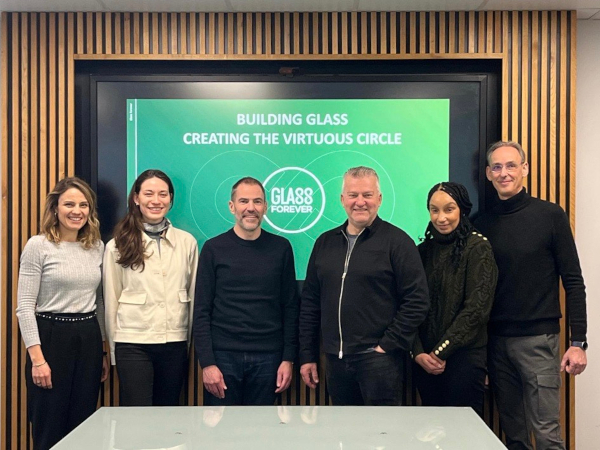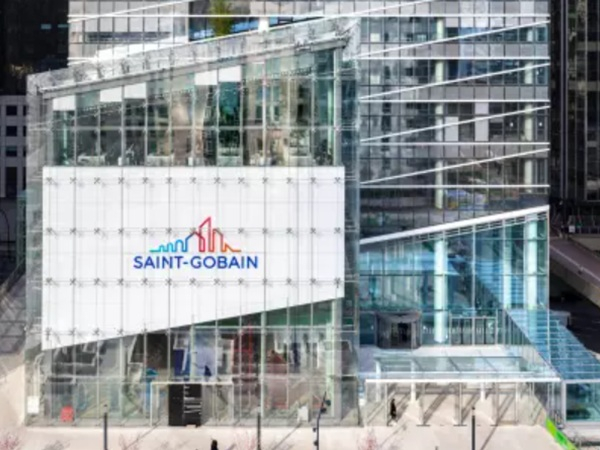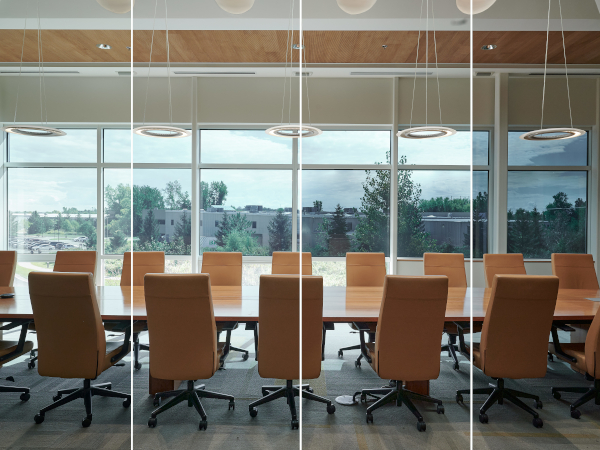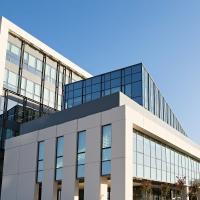Date: 26 November 2014
As the head of urban planning and building code office put it, “From urban perspective, it is a godsend for Dortmund that this urban space formative building gets a new use.It provides one hand, a win for Dortmund City and on the other it means that a particular architectural quality of the 1970s remains in Dortmund in its distinctive peculiarities.” Glass, especially solar control glass from Saint-Gobain played a key role in the creation of this historic transformation.
.jpg)
Saint-Gobain Glass at DoC Dortmunder Centrum fur Medizin and Gesundheit, Germany - Via Saint-Gobain Glass India Flickr Photostream
The planning for rebuilding into a clinic was conducted in close cooperation between Eller + Eller Architekten, the heritage authority of the city and the FO as a specialist Conservation Office in Westphalia. Says Michael Holt Kötter of the heritage authority, “The contemporary use of an architectural monument and simultaneously keep time as a sign of a past era are a balancing act and a challenge for the architects”. Exterior features included “layering” of the white bands of the parapet roof terraces and balconies alternating with the bronze-colored metal facades and gold sputtered solar control glass.
For the renovation of the bronze bands of windows, the all-new SGG COOL-LITE developed by Saint-Gobain Glass 137 GOLD was used for the first time. Based on the solar control glass SGG COOL-LITE SKN 165, SGG COOL-LITE KT 137 GOLD retained the look and feel of the original bronze but ensured significantly better thermal insulation and solar control properties. 1,800 square meters in various sizes up to 2.40 x 1.30 meters were produced and installed for the rehabilitation of the DoC. Seen from inside the building, the glasses compared to their predecessors from the 1970s also have a much lighter effect and the light transmission is so much higher. SGG COOL-LITE KT GOLD 137 is therefore ideal for meeting demands of energy efficiency. In addition, the glass can be laminated to add functionality such as security and acoustic performance.
While preserving the ‘same look, better performance’ objective, Erasmus Eller, CEO of Eller + Eller Architekten remarked “Necessary interventions in the building exterior have remained discreet and creatively organized to meet the historic preservation goals. The conversion of the former arcade and ticket hall in one atrium interior represents a noticeable, but barely perceptible change in the building”. The preservation of the facade structure while adapting to today’s technical and thermal insulation standards as a major technical challenge was very well executed by the parties. Especially for monument protection, it is a great success, to preserve the building largely in its external appearance, and Saint-Gobain’s solar control glass largely contributed in recreating history with all its glorious splendour…



















Add new comment